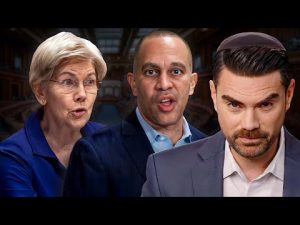**The Puppets of Protest: Unmasking the No Kings Coalition**
In recent events, protests dubbed the “No Kings” demonstrations have taken center stage, turning heads and raising eyebrows. On the surface, it may seem like a grassroots movement, fueled by the passion of everyday citizens. However, a closer look reveals a tangled web of orchestration—much like a puppet show, where the strings are pulled by a select group of individuals with a clear agenda. With the spotlight shining on the organization behind the protests, Indivisible, one can’t help but wonder: are these demonstrators truly engaged citizens or merely pawns in a larger game?
Indivisible was birthed from the minds of Leah Greenberg and Ezra Levin, a married couple and former congressional staffers, whose expertise in political mobilization is well-documented. Yet, what’s often overlooked is their unusual background. These two have dipped their toes into the murky waters of color revolutions, a strategy for political upheaval often employed abroad. In behind-the-scenes discussions, they have pondered the symbolism of colors, suggesting options like purple or yellow for their protests. Ironically, bright yellow topped the list, leading to a street scene reminiscent of a playful children’s party rather than a serious political uprising.
For skeptics, it’s hard not to question the spontaneity of such protests when one discovers that they were meticulously organized and financially backed by major players in the political arena. Reports indicate that US aid employees were seen distributing posters in support of the No Kings protests, merging the realm of activism with government involvement. Additionally, partnerships with groups like the local communist party suggest a coalition of left-leaning organizations working together—a well-synchronized dance of dissent, if you will.
The funding of Indivisible raises additional eyebrows. A significant chunk of their financial support comes straight from the coffers of George Soros and his Open Society Foundation. Known for his controversial influence in American politics over the years, Soros has cultivated a reputation as a major donor to leftist causes. Yet, characterizing his support involves peeling back layers of ideology that go beyond mere political preference. Many critics argue that Soros’s vision is broader and more complex, merging globalism with a very particular notion of “freedom”—one that many Patriots view as a threat to their values.
Interestingly, Soros himself doesn’t classify neatly into established political philosophies. Instead of being labeled simply a globalist or a socialist, he is often seen as a purveyor of moral relativism, claiming that there is no single truth that one can adhere to. This notion resonates through Indivisible’s protests, where the idea seems to be that subjective truths supersede objective realities. As these protests unfold, participants may celebrate their supposed activism without realizing they are being guided by an agenda rooted in deep ideological shifts—one that aims to undermine traditional norms and values.
Ultimately, these protests are not merely contentious political events; they symbolize a more significant cultural struggle within America. The presence of bizarre costumes, such as those donned by attendees who seem to revel in violence and chaos, raises questions more profound than politics. This isn’t merely a clash over policies; it hints at a broader battle over how the nation defines itself in an age where the clarity of truth is obscured. As the puppet strings of Indivisible are pulled from behind the curtain, the question remains: will those in attendance awaken to their roles in this orchestrated tableau, or will they continue to dance on cue, unaware of the shadows looming over them?







